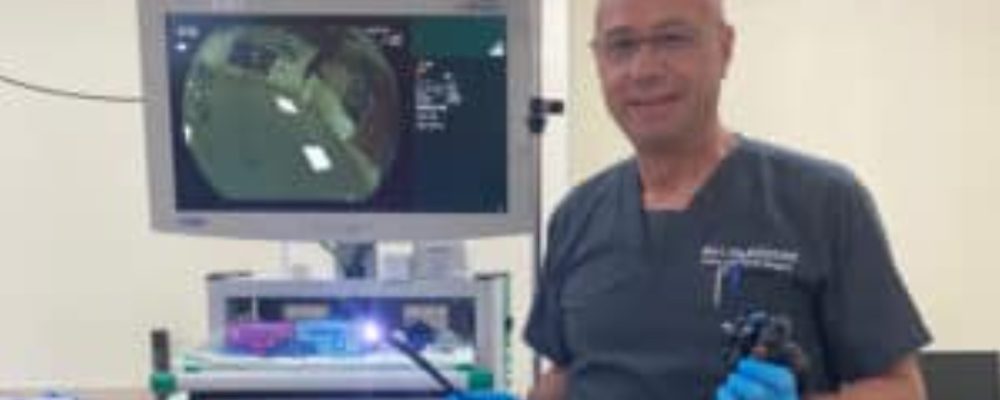Anal fistula is one of the most common proctologic disorders treated by colorectal surgeons and proctologists. Anal fistula is a tunnel, an abnormal communication between the inside of the anus and the skin surrounding the anus or adjacent structures such as the vagina in females.
Most cases of anal fistula are related to an anal gland infection which tracks from inside the anus to the surrounding anal skin. In a minority of patients, an anal fistula can be related to inflammatory bowel disease, such as Crohn’s disease. Other causes of anal fistula include atypical infections such as tuberculosis, radiation therapy, or cancer. Anal fistula affects mostly young people between the age of 20 and 50, with higher risks amongst males and smokers.
What are the symptoms of anal fistula?
Patients with anal fistula can initially present with an anal abscess.
The symptoms of anal abscess include pain, swelling around or inside the anus, and/or fever. The abscess can either open spontaneously and start draining or it is often incised and drained by a surgeon. After the drainage of a first-time anal abscess, about 60 to 70% of the patients will develop another abscess or will continue to have drainage of pus and bloody secretions from a formed fistula. This can occur within days, weeks, or months after the initial presentation. In a small group of patients, the first manifestation of a fistula is a skin nodule or opening around the anus with drainage. The symptoms associated with anal fistula can vary from day to day with good days and bad days depending on the degree of swelling, pain, or drainage.
How is anal fistula diagnosed?
Most patients with anal fistula are diagnosed in the clinic after sharing their symptoms and history with the doctor and undergoing brief examination which includes visual inspection of the area, digital finger examination, and anoscopy procedure to look inside the anus.
A minority of patients can present with an internal fistula without external manifestation. In addition to the office-based examination, most patients will undergo imaging to confirm the presence of the fistula and to determine the anal sphincter muscle involvement by the fistula. The best imaging modality is a pelvic magnetic resonance scan [MRI] . A colonoscopy examination is advisable to check the colon for any evidence of inflammatory bowel disease which can manifest initially as an anal fistula in a subgroup of patients .
What is the treatment of anal fistula?
The treatment of anal fistula is a delicate act that requires tremendous expertise and good judgment in order to achieve the best possible outcome for the patient. The colorectal surgeon needs to balance 3 critical factors: the first factor is to cure the fistula both in the short- and long-term, the second factor is to expedite the recovery of the patient and minimize any risk related to the procedure, and the third is to preserve the function of the anal sphincter muscle which is critical to continence. While most fistulas can be straightforward to treat, some fistulas can be very complex and require tremendous expertise in order to achieve the best possible outcome. But even simple fistulas can become problematic if treated by inexperienced surgeons which can render a simple situation more difficult and complex. Therefore, it is important for the patient to check the credentials and the expertise of the treating surgeon. Colorectal surgeons have specialty interest and training in the management of anal fistula. The main treatment for anal fistula is surgery. Patients with inflammatory bowel disease require medical treatment in addition.
Several surgical options are available for the treatment of anal fistula. The choice of an operation for a patient depends on many factors including the type of fistula, the gender and age of the patient, any prior surgical intervention, any additional medical conditions such as diabetes, smoking, obesity. The most effective therapy for anal fistula is to remove the anal fistula. The operation of fistulotomy or fistulectomy entails careful removal of the fistula and in some cases repair of the sphincter muscle. This operation yields the highest success rate when technically performed safely by an experienced surgeon. It is the preferred method for most patients with superficial fistula. Patients who present with more complex and deep fistulas involving a significant amount of muscle, require the initial placement of a draining seton to control the infection, followed by a definitive second stage operation at a later date to repair the fistula. A seton is a thread that gets introduced through the fistula tract and is tied externally.
Following a period of stability with the seton, a second stage operation is done to repair the fistula. Several procedures are available including flap closure, the LIFT procedure, laser or obliterative procedures such as videoscopic procedure. The choice of a particular operation for an individual patient depends on various factors and the judgement of the surgeon is of paramount importance.
Who should you see for anal fistula?
Anal fistula is a very complex condition that affects a very sensitive part of the body. It is a critical for the patient to the seek care of an expert surgeon trained in the management of diseases of the colon, rectum, and anus. Surgeons who are board certified in colorectal surgery are usually the most qualified to treat patients with anal fistula.




